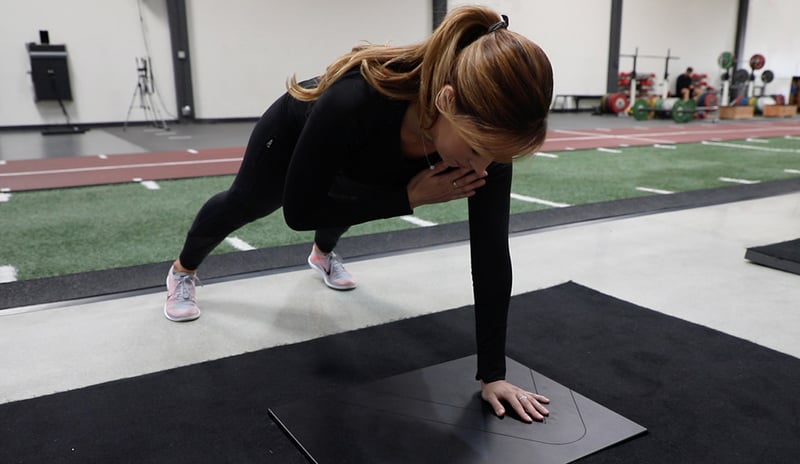
Human movement is an extremely complex symphony of coordination between different systems of the human body. Because of this, it has become commonplace to assess movement in discrete parts to attempt to explain the function (or dysfunction) of the whole. To give a simple example, when an individual experiences shoulder pain, it is commonplace to just take a look at their shoulder to try and identify a potential cause and solution. This practice is even more common when addressing issues above the waist (shoulder, elbow, neck, low back). Our roots in working with MLB and NFL athletes and their host of upper extremity issues is what started us on our path to develop something better. From that application to our more recent work in elite and conventional military, we’ve developed a process that assesses the core and upper body more practically and objectively while also leveraging machine learning to provide actionable insights on how to improve. Before discussing how things can improve, let’s explore why they need to.
There is an array of core and upper body screens or assessments aimed at identifying pain or dysfunction both because of this and the large impact these injuries can have. Two of the most common injury locations in all human populations occur above the waist at the shoulder and the low back. Chronic Low Back Pain (CLBP) affects more than 50% of people in the United States. It is the primary cause of work absence and permanent disability (6), while Shoulder Pain is self-reported in up to 26% of the population and is the 3rd most common cause of musculoskeletal consultation in primary care (1).
Unfortunately, there are no established guidelines or screens to assess upper extremity or core function. The majority of clinically used orthopedic upper extremity screens have the disadvantage of being subjective, decreasing the reliability or accuracy of the tests. A 2010 review concluded that based on the body of literature, there is “no consistent evidence that any physical examination procedure for shoulder pain had acceptable levels of reliability or reproducibility” (4). Additionally, these subjective assessments provide little to no objective data on movement characteristics or potential compensatory movements from other joints that can influence the function of a joint in natural movement (2). These can give a quantitative output measure such as a specific number of degrees in a range of motion test, but they don’t give any information on the strategy of how an individual achieved that output. These strategy metrics are critical because of the complexity of human movement. There is currently no accepted gold-standard test for the function of the upper extremities.
Core strength and stability have been theorized to improve performance and reduce injury risk for both the spine and the extremities, however, there is very little evidence supporting this in the literature. Clinical measures of core stability are commonly endurance-based tests that have shown little validity in the research. There is little consistency in literature around how core strength or stability is defined or measured. Most clinical measures focus on the muscle capacity (strength/endurance) component and completely ignore the role of neuromuscular control. The most common tests are flexor/extensor endurance tests, sustained side plank, or double leg lowering. For example, a 2009 study defined core strength as the sum of an individual’s results in 3 endurance-based tests measured in seconds (back extension, trunk flexion, and left and right bridge) (8). Perhaps unsurprisingly, they found no significant correlations between performance (vertical jump, 40-yard sprint, 10-yard shuttle) and core strength when defined this way.
A 2010 review titled “The Myth of Core Stability” further challenges the claim, largely questioning previous assumptions and discussing the inaccuracies of simplifying the complexity of the function and definition of “the core” (10). Core stability and improvements in core stability are specific to the methods utilized in the research, so there is no widely accepted definition of core strength or core training. For example, the majority of research shows that both targeted core stability exercises and general exercises are equally effective at improving back pain symptoms. Keep in mind, this ignores the fact that many “general exercises” utilize the “core” as much as targeted core stability exercises.
Because of the lack of accepted gold-standard tests to assess the function of the upper extremities and core, there is a need for a new approach. A recent novel single-arm plank assessment performed on a force plate has been proposed to address some of the key issues with the current clinically used tests. Utilizing a force plate allows for the practical collection of objective data which dramatically increases the reliability of testing, especially when compared to current subjective clinical screens (11). As a closed chain test, the single-arm plank position requires not only stability of the wrist, elbow, and shoulder, but the trunk and hips as well. The benefit of utilizing this as opposed to an “open chain” assessment is that it allows for a more holistic measure of core stability instead of isolating a single part or joint.
While at Sparta Science we will always be looking to improve the currently accepted processes, our peer reviewed research has already shown the single-arm Plank Scan to be reliable and predictive of certain core and upper extremity injuries. Additionally, an analysis of collegiate athletes found those who later sustained a trunk injury had significantly lower single-arm plank scores than athletes that remained healthy (11, 12). As more Plank Scans are performed and more injury data is collected, Force Plate Machine Learning will continue to create new standards and metrics that outperform their predecessors.